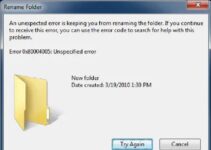First, we need to understand what is CTF Loader. It stands for “Collaborative Translation Framework”. It is particularly known for managing and supporting the handwriting and voice recognition process for Microsoft applications.
This process is usually seen to run in the Task Manager as CTF Loader or simply as ctfmon.exe while using any MS Office programs.

Is CTF Loader or Malware is a Virus?
When you are running slow with your system, and you find the CTF.exe file running in the task manager. However, it can be malware or virus too. CTF LOADER is not a Virus or malware. It is basically a process used by Windows in order to deliver text support for Windows users who uses other input applications.
This includes speech recognition, handwriting, keyboard translations to enter text on their respective computers. CTF is also used for activating Microsoft Office’s language bar. This is an essential feature that enables users to switch quickly and easily between different input languages that are available on the Windows Operating system.
In maximum cases, CTF works in the background without having any effect on your system. But when it uses the CPU resources a little too much, it becomes problematic as it slows down the whole system.
Now here are some solutions listed below that might get you through the issues that you are facing and few tricks that you yourself can implement to fix the performance that is affected by the CTF Loader.
Read Also:
How to Fix CTF Loader Error in Windows 10?
You have no cause to worry about this process. As it is neither harmful nor does it cause any damage to the system. However, it can lead to creating issues, throwing up errors, and even make your system slow sometimes. If you recognize that CTF Loader is causing the high CPU usage and is slowing down the entire system, then it is advised to you, to fix the issue.
Also, it is important for you as a user to make sure that whether the program you are running is still showing bin the Task Manager even if it is not dependent on the CTF Loader. In this case, you might consider it to be a virus in place of the CTF Loader.
Method 1: Check for Windows Update
This is the first method. Here you are advised of the very basic step that most of us already know. If the CTF Loader is giving you issues or if it is not performing appropriately then the first thing that you must do is check for Windows update.
It may happen that your version of Windows might not be updated, hence it might contain a bug or error related to the CTF Loader making it function abnormally.
Please follow the next steps to fix this issue through this method,
Step 1: First click on the windows key from the keyboard. This will take you to the Start menu.
Step 2: Next, click on the Gear icon from the Start menu. This will take you to Windows Settings.
Step 3: Next, click on Update & Security.
Step 4: At last, click on the Windows Update option. The system will automatically look for updates that are available on the computer.
After that follow all the on-screen information to complete the process strictly.
When you are finished with all of this run the Task Manager to check whether ctf.exe is still using a lot of resources or not.
If it does, i.e., if your issue is not solved quickly go for the next method.
Method 2: Turn Off Keyboard and Handwriting Services
To undergo this method, you must follow the listed steps below in the given order to complete the process and solve the issue –
Step 1: First, Right-click on START
Step 2: Click on RUN from the drop-down list.
Step 3: The Run Command dialog box appears. Write services.msc.
Step 4: Press OK. The service Manager Window opens.
Step 5: When you open the Service Manager window after that go straight to the right side of the pane. Under Names, you will find Touch Keyboard and Handwriting Panel Service.
Step 6: Double click on Touch Keyboard and Handwriting Panel Service. This will open the Properties dialogue box.
Step 7: Go to General and then to Startup type and set it to Disabled.
Step 8: Click on Apply. Press Okay to save the changes.
When you are finished with all of this run the Task Manager to check whether or not your issue is solved. If not, without any hesitation go through the next method.
Method 3: Delete the Executable
This is rather a short and helpful procedure that might help you solve all your issues with the CTF –
Step 1: First click on the windows key and E key from the keyboard together. This will lead you to File Explorer.
Step 2: In the File Explorer Window, go through this path: C:\Windows\System32
Step 3: Find the ctfmon file.
Step 4: Select it and delete it.
This can be an effective way to tackle your problem. But if it does not solve your issue then you should definitely check out the next method.
Method 4: Manage ctfmon.exe Through Task Scheduler
Next in this method, we are trying to control the using time of the CTF Loader. Through this method, you will particularly learn to do that. There is a good possibility that all your issues will be solved with this.
Step 1: First, type Task Scheduler in the search area from the Start.
Step 2: Now, click on the Task Scheduler result that came up.
Step 3: The Task Scheduler window opens. You will find the Task scheduler Library.
Step 4: Click on Microsoft.
Step 5: After that click on Windows. A drop-down appears with enlisting folders.
Step 6: Look for TextServicesFramework.
Step 7: From the right panel right click on MSCTFMonitor.
Step 8: Click on the Disable option from the drop-down.
Method 5: Scan Windows for Malware and Viruses
If your issue is still not solved with the above methods, you should definitely check this method out. As many of us assumed that it might be the virus or malware that is causing the issue and we are assuming it to be the CTF.
Windows Defender is available on all systems. This can help you to scan the hidden malicious files.
Follow the steps below to complete the process –
Step 1: Start by clicking the windows key and S key from the keyboard together. This will lead you to search Windows Defender
Step 2: Find and open the respective Windows Defender option/tab.
Step 3: After that go through the scan options. Find and select full.
Step 4: Click on Scan now to activate the process.
Step 5: When the scan is completed. Go to Start and reboot or restart your system.
When you are done with all these 5 steps you are advised to go to Task Manager and check for your issue.
Read Also:
Conclusion
All the above methods are effective and efficient if followed in the right manner. One will surely find one useful method from this that will guide him through this issue. Go through all the steps very clearly and follow all the steps strictly. This set of solutions might have the one perfect one that you were looking for.


